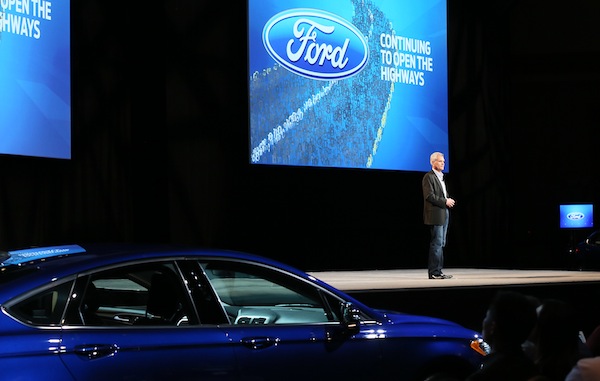DAC 2014 aims to build design bridge to automotive
The 2014 Design Automation Conference (DAC) has launched a technical strand dedicated to automotive design. DAC’s organizers have issued a call-for-papers with an abstract deadline of Friday, November 22. Next year’s DAC itself will be held in San Francisco and the Moscone Center, June 1-5, 2014.
The strand is not a surprise, though definitely worthwhile. The line about the electronics in a car being worth more than the steel is well-worn. This initiative comes as the US auto industry is in robust recovery after its near post-Lehman collapse. Ford – which took no bailout money – has already been remaking itself as a rock star at the annual Consumer Electronics Show.
Meanwhile, automotive has long been a strong theme for DAC’s Europe and Asian equivalents. In its bid to increase international attendance, DAC 2014 is seeking presenters and delegates from those regions as well.
The strand will feature keynotes and exhibits as well as technical tracks. The main topics are architectures and software; safety, security and reliability; interfaces and driver assistance systems; and electromobility.
DAC’s goal is to link the chip design, embedded software and board-level system design communities with the higher-level integrators within the automotive OEMs themselves.
DAC 2014 AUTO strand line-up
Here is the preliminary DAC 2014 line up of the 21 different subcategories as well as the main themes in the Design Methods for Automotive Systems and Software (AUTO) strand. You can also click here for more detail on how to submit papers.
AUTO1: Systems and Architecture & Software Design
- AUTO1.1: Automotive E/E architecture design methods and tools
- AUTO1.2: Model-based systems and software engineering
- AUTO1.3: Automotive Control Systems Design
- AUTO1.4: Virtualization in the automotive domain
- AUTO1.5: Multicore challenges
- AUTO1.6: PLM solutions for development, update and sale of automotive software and apps
AUTO2: Safety, Security and Reliability
- AUTO2.1: Assessment and detection of security threats and vulnerabilities
- AUTO2.2: Designing architecture and software for security
- AUTO2.3: Formal verification and model-based testing
- AUTO2.4: Safety requirements and their verification
- AUTO2.5: Reliability in the nano-scale era
AUTO3: Interfaces & Driver Assistance Systems
- AUTO3.1: Efficient deployment of AUTOSAR and automotive standards
- AUTO3.2: HMI, infotainment development and usability testing
- AUTO3.3: Development methods for advanced driver assistance systems
- AUTO3.4: Design methods and toolchains for autonomous vehicles and active safety
- AUTO3.5: Environment and uncertainty analysis and modeling
AUTO4: HEV/EV and Electromobility
- AUTO4.1: Architectural design and optimization for EVs and HEVs
- AUTO4.2: Electric and hybrid drive train and Power electronics design methods and tools
- AUTO4.3: Design, modeling and optimization of batteries and hybrid energy storage systems
- AUTO4.4: Infrastructure analysis, modeling, simulation and optimization
- AUTO4.5: Energy-efficient vehicle and infrastructure design methods
